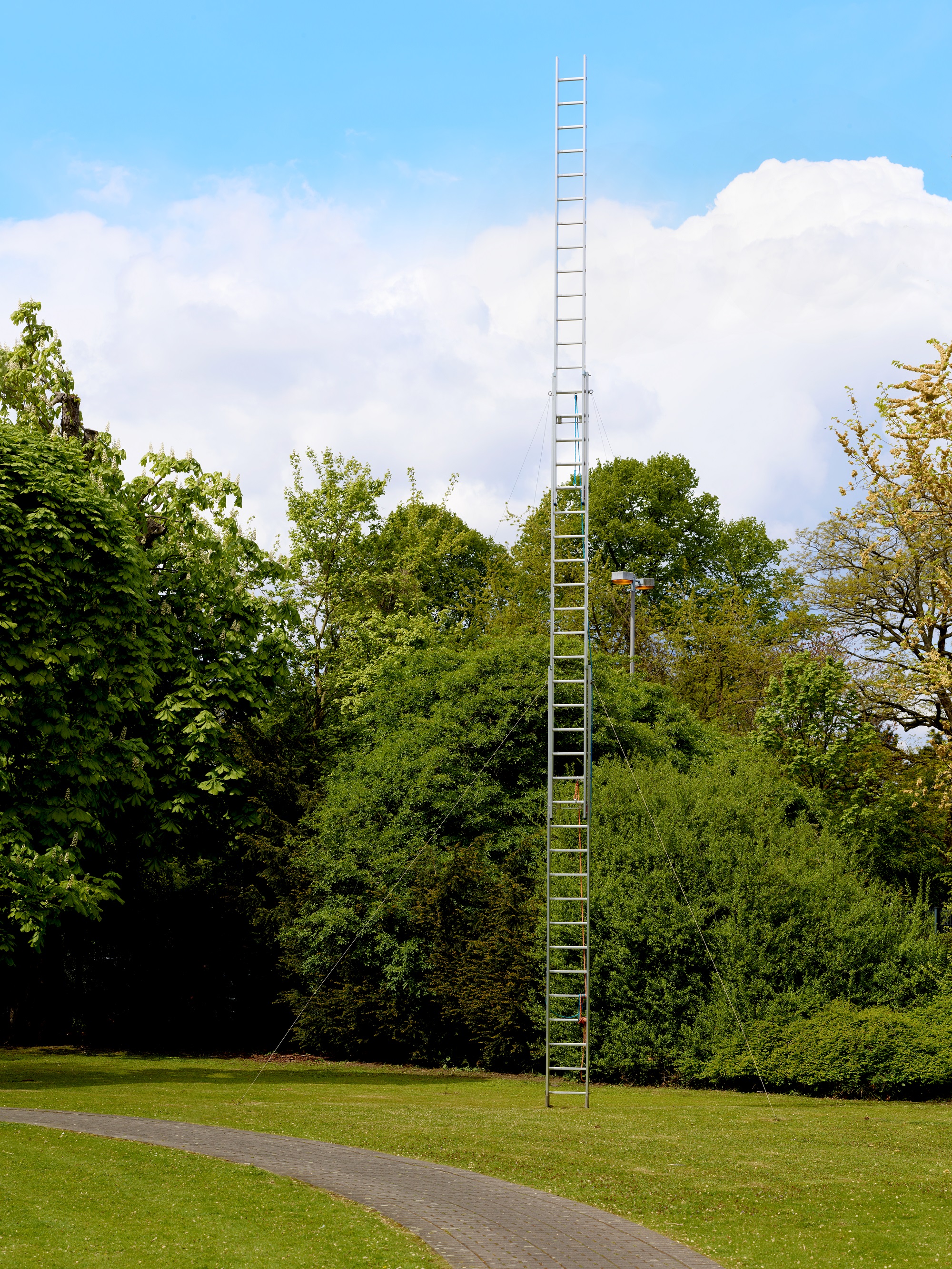
The ladder suits art: a distinctive object which everyone recognizes, it implies action and provides a powerful metaphor for progress on Earth and ascension to unworldly realms. Naturally, ladders have appeared in many paintings: Jacob’s Ladder is a popular subject, and Joan Miró featured them throughout his long career. But the primary attraction is for sculptors: a ladder has the potential to use the full height of a gallery, and its physical presence provokes its viewer with the thought of jumping on board and climbing to the top—though, in a gallery, that will rarely be allowed.
A ladder rendered dysfunctional suggests that life’s journey is going to be hard. David Shrigley makes the point with typically barbed humour in Crushed Ladder (2008), which is very much what it says on the (squashed) tin. This sad object is utterly unclimbable—who knows where you would even start. Ceal Floyer’s 2010 work Ladder (Minus 2-8) poses equally challenging climbing possibilities, it is a standard aluminium house ladder, but with every rung removed except the first and ninth, highlighting the notoriously tricky symbolic journey from optimistic first step to triumphant summit.
We might also ask what we now have here: has Floyer turned the object into art by making it unclimbable? Has she stopped it from being a ladder by the same means, as surely the essence is that you can climb it? Wittgenstein famously said that anyone who understood his Tractatus Logico-Philosophicus would recognize its propositions “as nonsensical, when he has used them—as steps—to climb beyond them. (He must, so to speak, throw away the ladder after he has climbed up it.)” Floyer has got some of the way there.
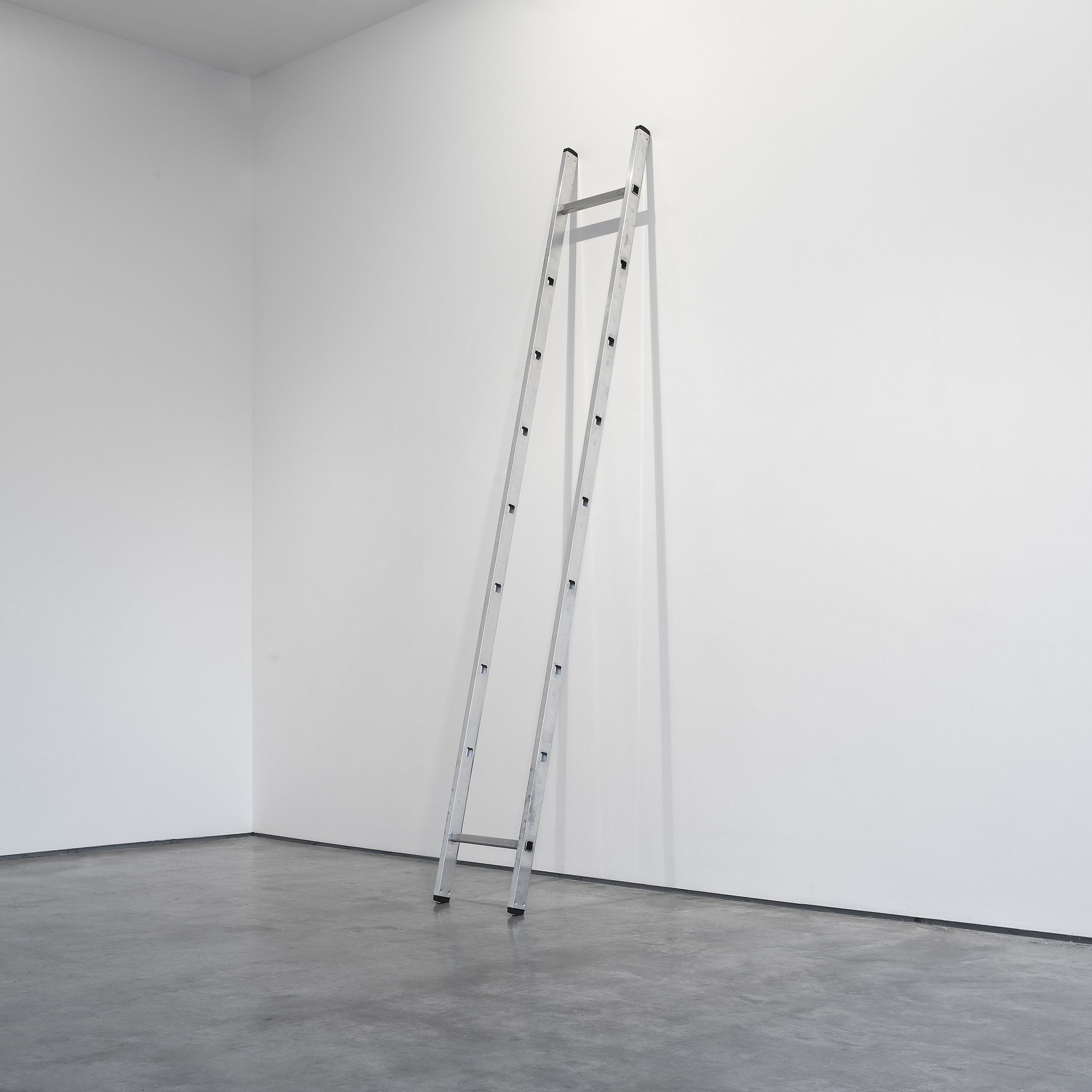
Sofia Hultén’s In Between the Possibilities (2010) achieves a similar outcome by opposite means: rather than removing anything, Hultén has added extra steps to a found wooden step ladder, treating them to ensure that they cannot be distinguished from the timeworn originals. The title suggests we might be seeing an extra reality, slightly shifted from our usual experiences. However, there are now too many steps to make use of them: perhaps a fourth dimension might not be so helpful.
“A ladder rendered dysfunctional suggests that life’s journey is going to be hard”
That reminds me a little of Shane Bradford’s Big Ladder/Burning Ambition (also 2010). Bradford repeatedly dips canvases and objects in tanks of multi-coloured emulsions, building up stalactite formations along their edges. Applying the technique to a ladder, he positions the drips to run upwards, suggesting that it’s on fire, as well as playfully inverting—and problematizing—the expectation of ascent.
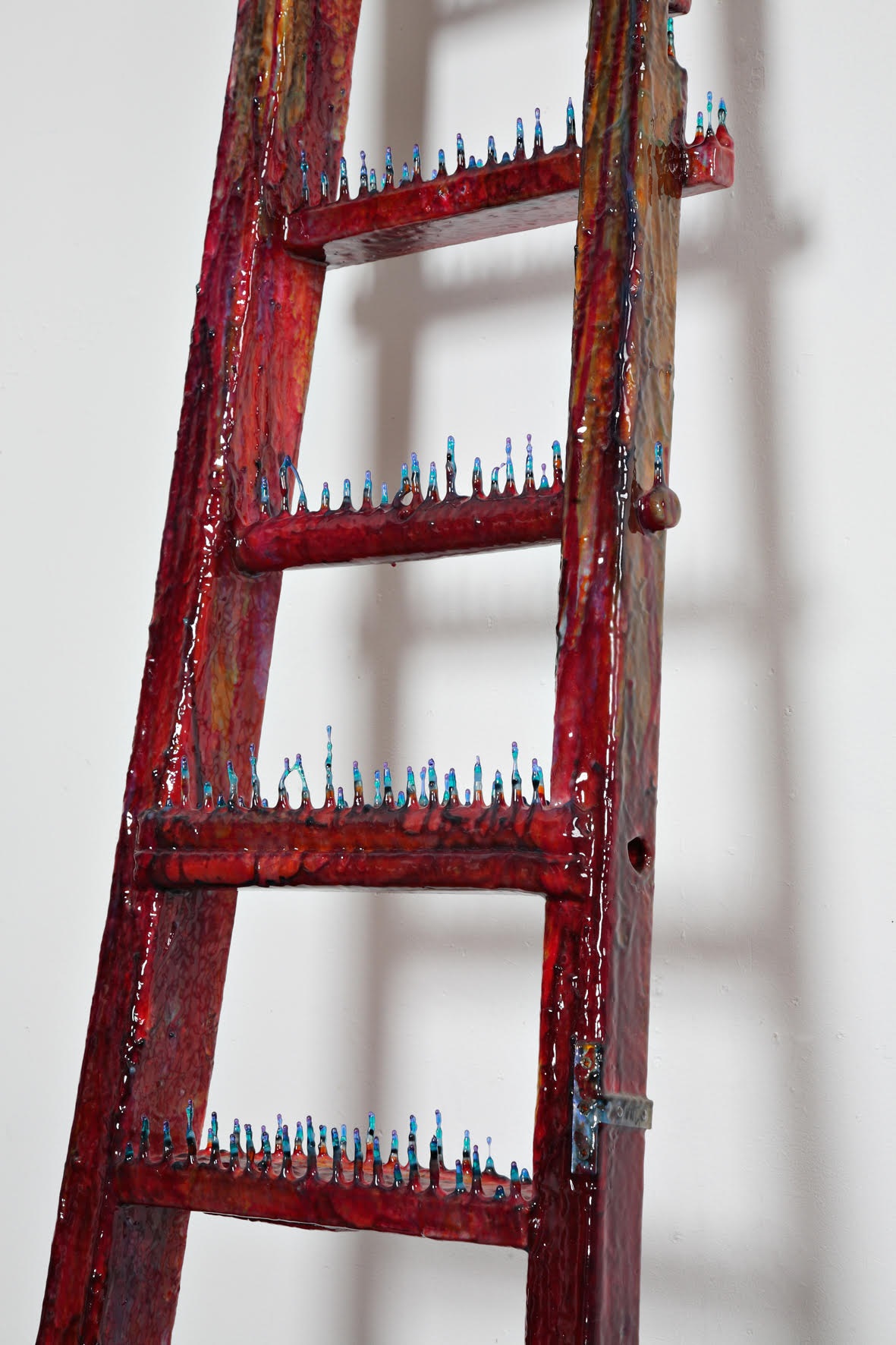
Unsuitable materials can have a related effect. Richard Tuttle’s Ladder Piece (1967) is made of dyed and cut canvas—again, unclimbable. Adeline de Monseignat’s Echelle Charnelle (2018) is inspired by a distorted ladder in a Tuscan quarry, and is made of the Negro Monterrey marble it inhabits: a comment, she says, “on how objects, like humans, literally turn into the environment they live in”. Scale, as well as impractical material, plays a role in the absurdity of the over-sized and colourful inflated ladder with which Paola Pivi invaded the grand renaissance space of the Palazzo Strozzi in Florence with brazen yet charming inappropriateness, with Untitled (2016).
None of which is to say that these objects cannot soar to evocative heights. Bethan Huws started from her own teenage drawing of a free-standing ladder to the sky when conceiving Ysgol (Welsh for “school”) in 2013: a three-part, commercially produced aluminium structure is extended full-length into the air. Cai Guo-Qiang’s Sky Ladder (2015) is even taller: a flaming 1,650-foot-tall version, held aloft by a giant balloon and rigged with explosives. As the massive sculpture ignites, it creates a fiery vision up to the heavens. Iván Navarro has exploited mirroring and light to achieve the illusion of infinity. In This Land Is Your Land (2014) he put a neon ladder into the structure of a New York water tower, suggesting immigrant hope inside a symbol of subsistence which might also read less comfortably as a watchtower.
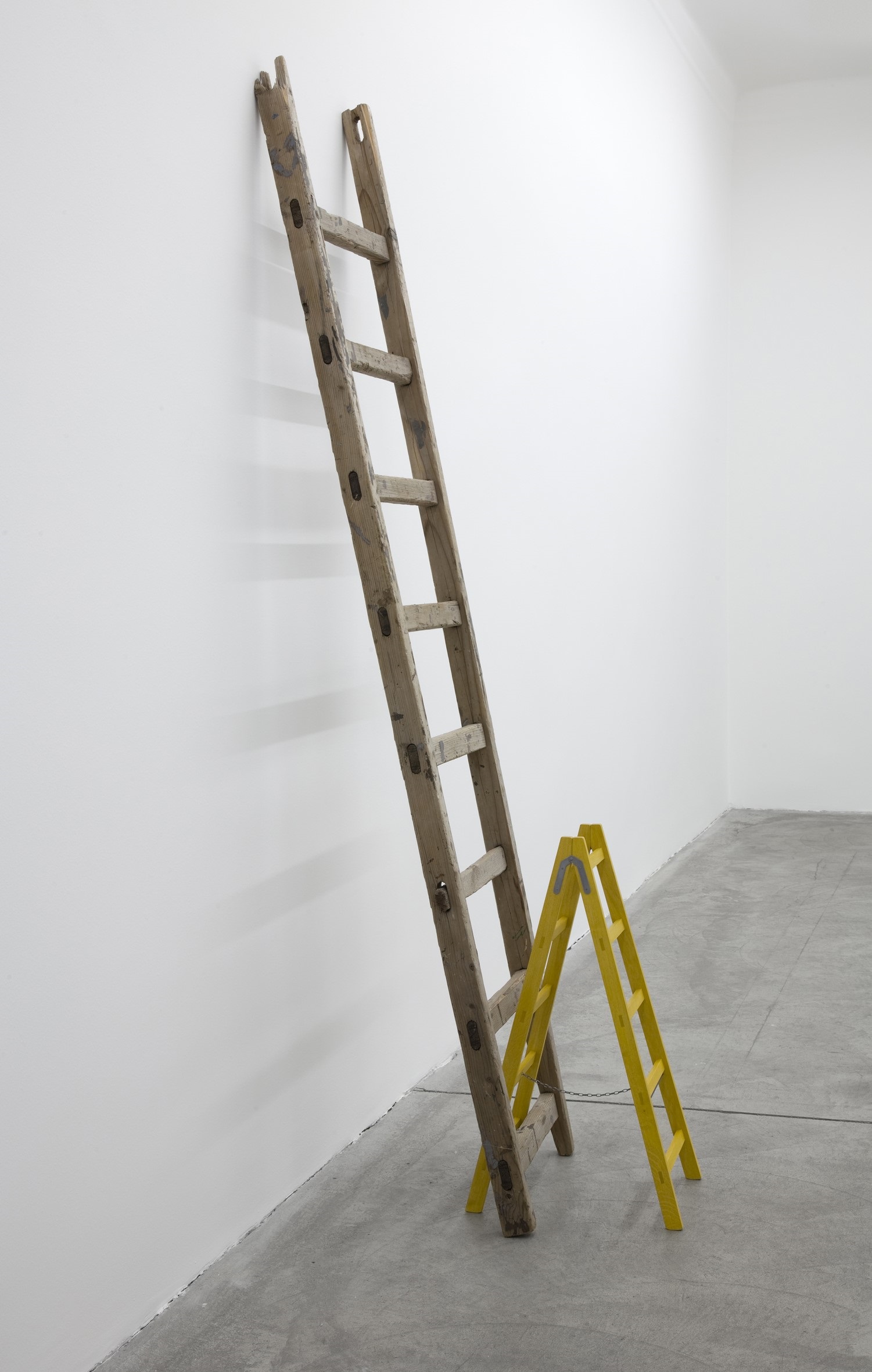
Yet infinite rungs may be unnecessary: Plato illustrated his theory of knowledge through a ladder of just four steps. True knowledge is gained by moving from the bottom rung of illusion; to learning based on the actual physical; to the world of abstract ideas, mathematics, geometry; and finally, to philosophical understanding of the world as a whole. Plato’s presentation remains popular: you don’t need to look far online to find snippets of easily digestible philosophical advice on how to reach new heights on the ladder of life.
“You don’t need to look far online to find snippets of easily digestible philosophical advice on how to reach new heights on the ladder of life”
That world is social, and so far it might seem the ladder is a lonely creature. Not necessarily so: Reiner Ruthenbeck’s Doppelleiter, from 1967, consists of two ladders intertwined so that they stand up in balance. The benefits of collaboration are made a little less clear, however, by the impossibility of climbing them. Roman Ondak’s installation Third Way (2013) is another double. One ladder, old and wooden, leans against a wall. In front of it stands a delicately miniaturized stepladder. Ondak sees their contrasting proportions and the implied views from them as representing changes of perspective.
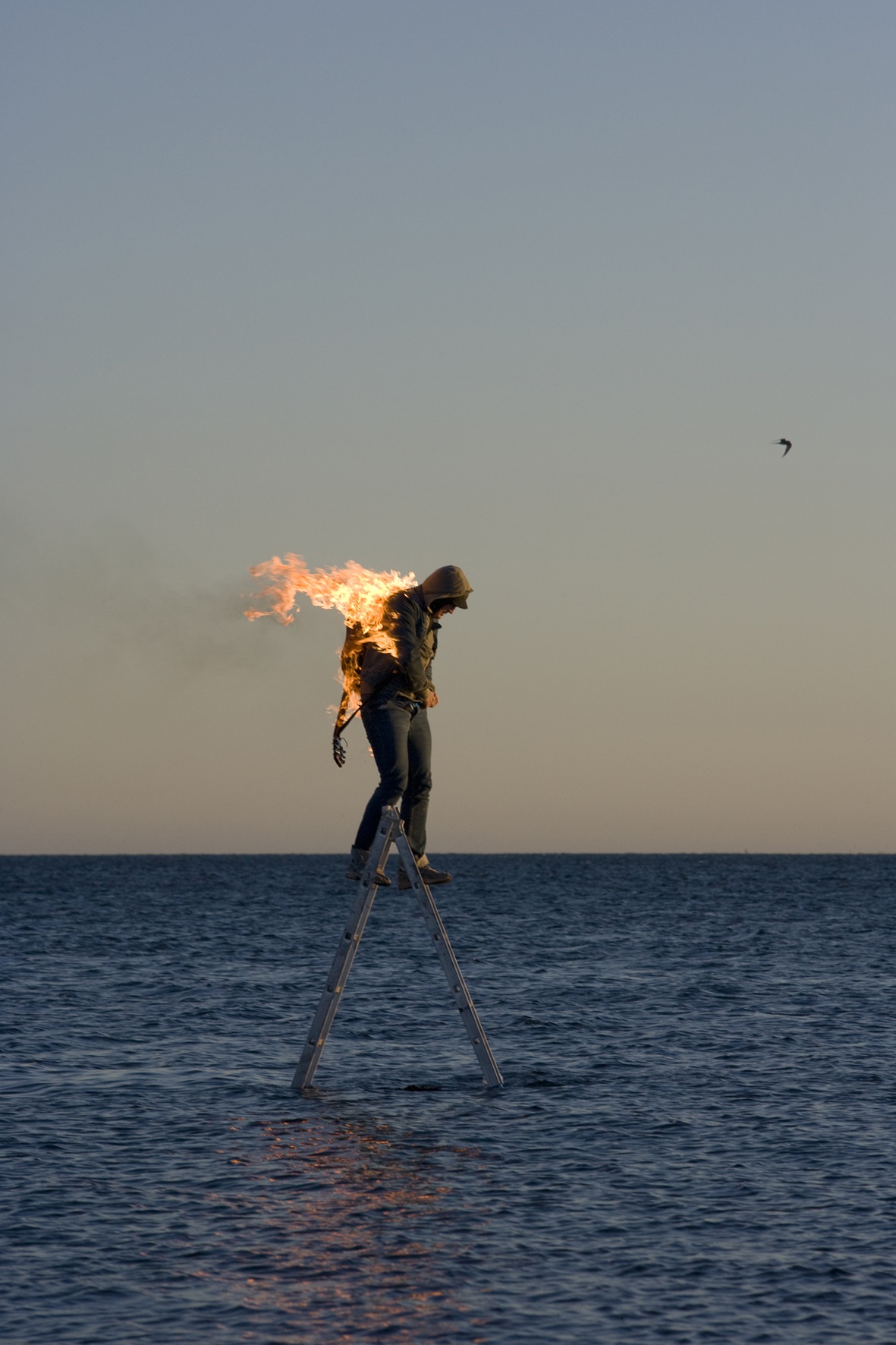
Michael Samuels’ Deceased Estate, Berlin (2018) is an arrangement of found materials, largely ladders, which pursue the formal concerns of repetition and colour relationships with enough ramshackle energy to suggest that they might collapse. Jim Lambie pushed the chromatic ladder even further in his 2012 installation Shaved Ice, which consists of sixteen versions running from floor to ceiling at The Modern Institute in Glasgow, accentuating both the height and symmetry of the space through mirrored inserts and luminous colours. A way, if you like, of moving his famous multi-striped floor coverings of tape into the air.
Yet even that would be a low rung for the American artist Charlie Brouwer: his 2014 project Rise Together Allentown combined 275 ladders lent from local people into one riotous tribute to community aspiration. But the most famous ladder in modern art is probably the one John Lennon climbed to examine Yoko Ono’s Ceiling Painting at the Indica Gallery in London in 1966—leading to their famous and much-debated union.
Perhaps we should conclude with a ladder actually being used—and in both air and water. For A Self Created Hell (2010), William Hunt—who often makes music in extreme conditions—strums his guitar atop one, off the coast of Reykjavik. At the end of the performance, he sets himself on fire and jumps into the water, extinguishing the flames. It’s the ladder which enables this tragicomic act of ascent, attempted transcendence and reassuringly redemptive fall.





